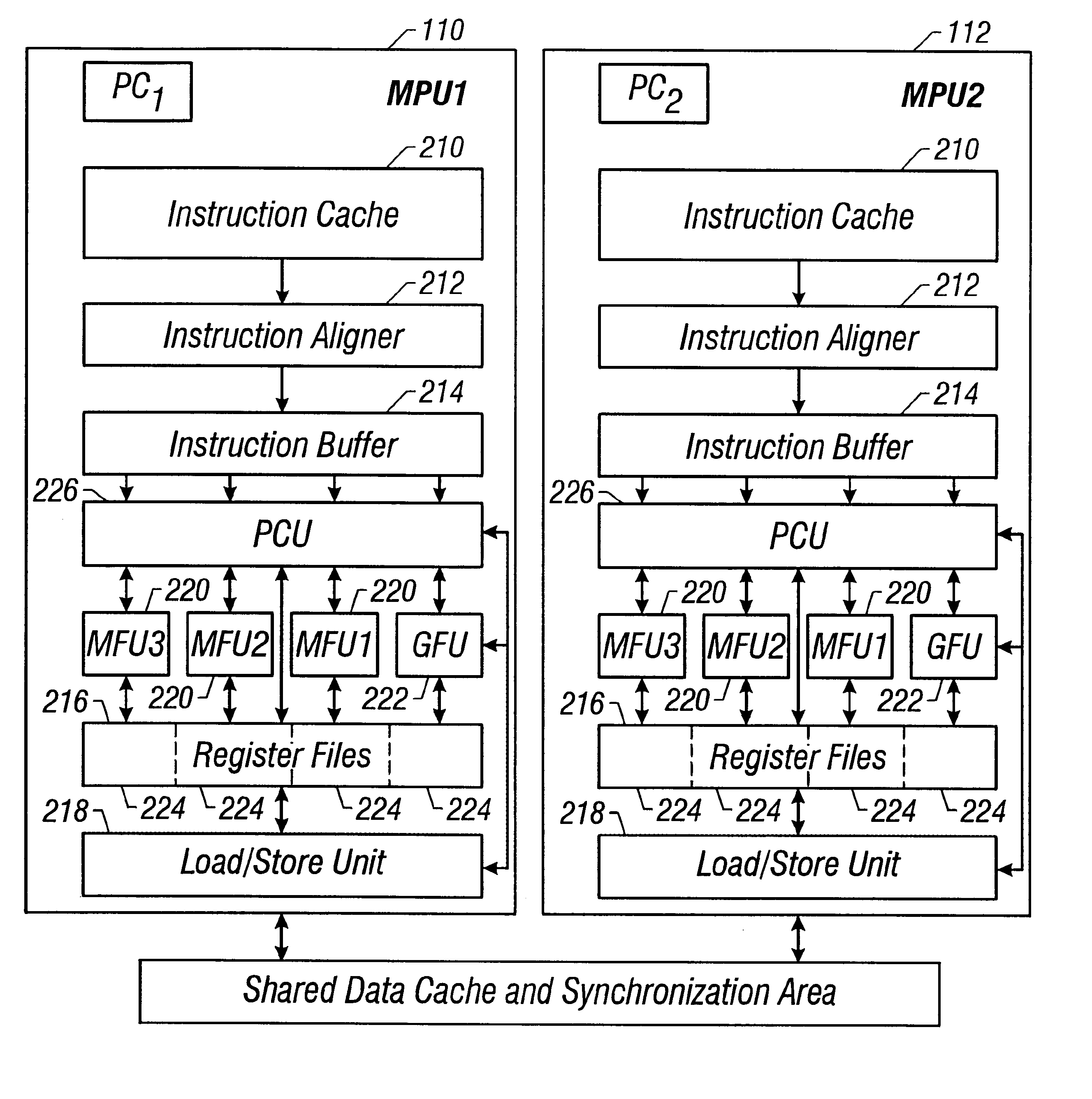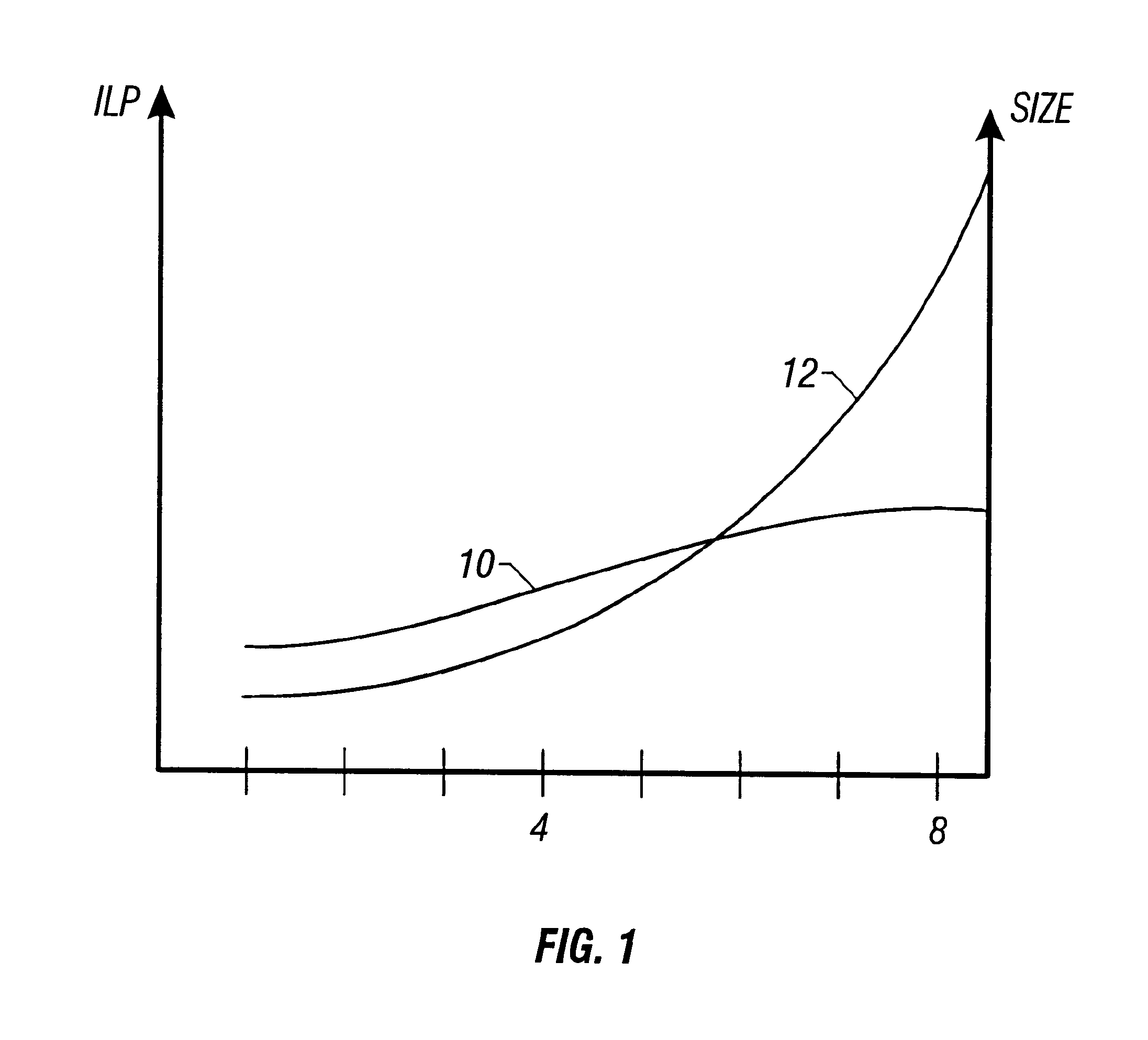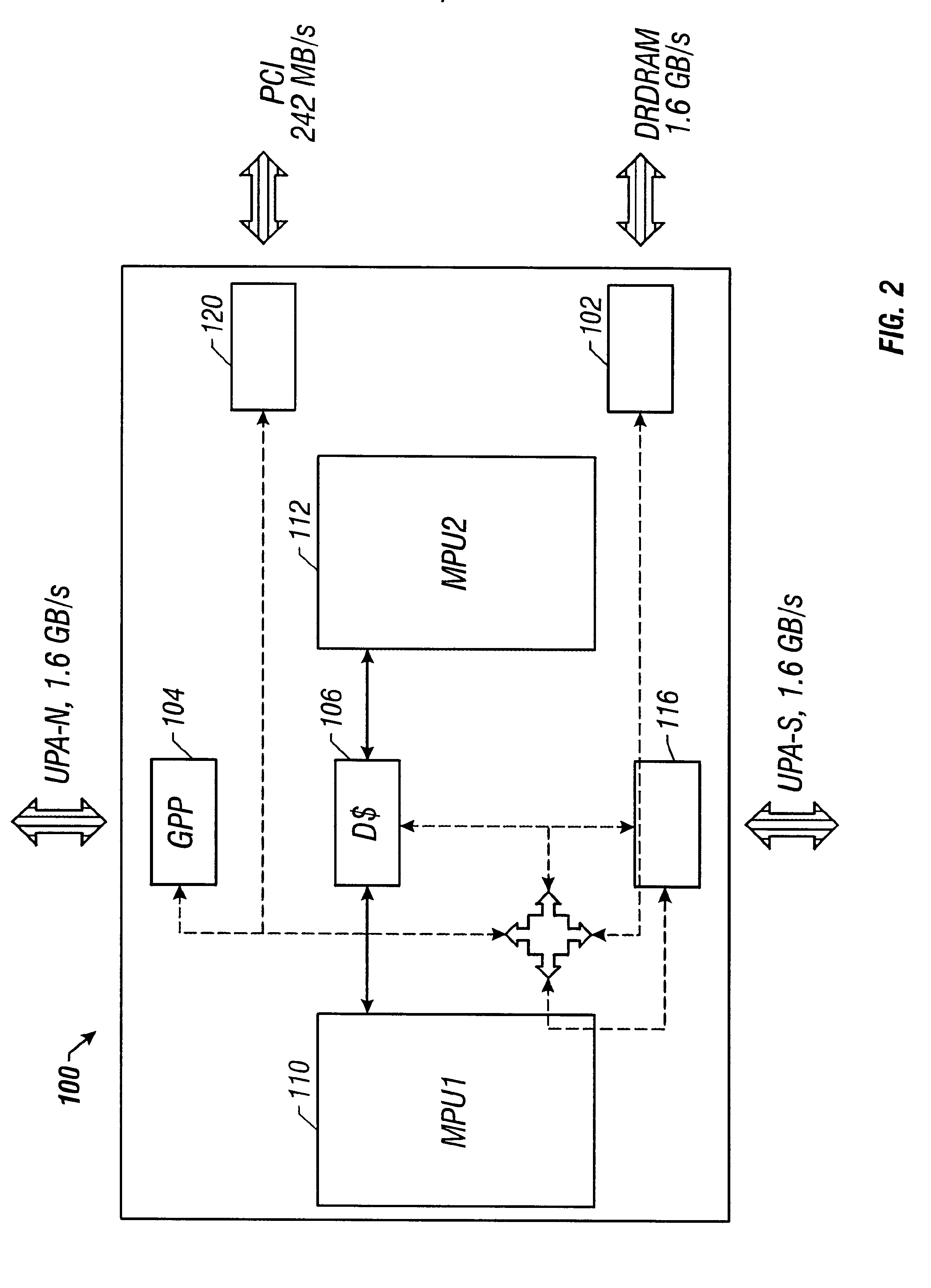Clustered architecture in a VLIW processor
a processor and clustering technology, applied in the field of processors, can solve the problems of limited parallelism, large increase in code size, and limited hardware resources
- Summary
- Abstract
- Description
- Claims
- Application Information
AI Technical Summary
Problems solved by technology
Method used
Image
Examples
Embodiment Construction
)
Referring to FIG. 2, a schematic block diagram illustrates a single integrated circuit chip implementation of a processor 100 that includes a memory interface 102, a geometry decompressor 104, two media processing units 110 and 112, a shared data cache 106, and several interface controllers. The interface controllers support an interactive graphics environment with real-time constraints by integrating fundamental components of memory, graphics, and input / output bridge functionality on a single die. The components are mutually linked and closely linked to the processor core with high bandwidth, low-latency communication channels to manage multiple high-bandwidth data streams efficiently and with a low response time. The interface controllers include a an UltraPort Architecture Interconnect (UPA) controller 116 and a peripheral component interconnect (PCI) controller 120. The illustrative memory interface 102 is a direct Rambus dynamic RAM (DRDRAM) controller. The shared data cache 1...
PUM
 Login to View More
Login to View More Abstract
Description
Claims
Application Information
 Login to View More
Login to View More - R&D
- Intellectual Property
- Life Sciences
- Materials
- Tech Scout
- Unparalleled Data Quality
- Higher Quality Content
- 60% Fewer Hallucinations
Browse by: Latest US Patents, China's latest patents, Technical Efficacy Thesaurus, Application Domain, Technology Topic, Popular Technical Reports.
© 2025 PatSnap. All rights reserved.Legal|Privacy policy|Modern Slavery Act Transparency Statement|Sitemap|About US| Contact US: help@patsnap.com



